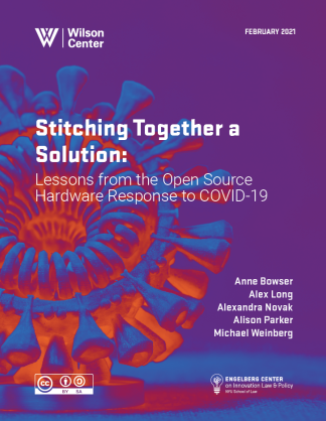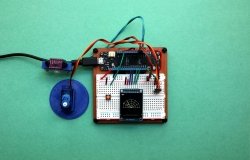Stitching Together a Solution: Lessons from the Open Source Hardware Response to COVID-19


On February 7, 2020, with only 270 documented COVID-19 cases and 1 reported death outside of mainland China, WHO Director-General Dr. Tedros Adhanom Ghebreyesus issued a warning: “the world is facing a chronic shortage of personal protective equipment.” Although COVID-19 had not reached crisis level in the public consciousness, it was already clear to public health authorities that the virus was something the US government needed to prepare for, and that preparation needed to start immediately.
Thousands of individuals—across the country, and around the world—met this moment of need with ingenuity. They formed virtual networks—small and informal at first, quickly becoming larger—to activate engineers, medical professionals, logistics experts, and regulatory specialists. These networks relied on open source hardware (OSH) approaches to quickly create, collectively iterate, and disseminate designs for medical supplies. Once the designs reached a stable point, makerspaces, hackerspaces, university machine shops, and small batch manufacturers began production in communities across the country.
Overall, the OSH response to the COVID-19 crisis is an inspiring example of disparate communities coming together to leverage open, distributed design and manufacturing to meet a moment of international need. At the same time, this collective ingenuity was necessary because of failures in both traditional supply chains and response coordination. While the open hardware response to COVID-19 was incredibly successful, it was significantly less effective than it could have been with more intentional coordination—including within OSH communities, and between open hardware communities and various government authorities working on different aspects of the response.
Collectively, we have an opportunity to understand what happened in spite of the missteps, to identify ways to avoid similar problems in the future, and to create the infrastructure required to leverage the power of OSH. The Open Hardware and COVID-19 Roundtable, convened by the Wilson Center’s Science and Technology Innovation Program (STIP) and the Engelberg Center on Innovation Law & Policy at NYU Law, pulled together representatives directly involved in the response from a wide range of roles—including makers, designers, institutions, and government officials. This report is the culmination of an initial set of roundtable conversations. The focus of our analysis is how these communities formed, grew, structured themselves, and operated, as well as what factors contributed to—or inhibited—their success. We are particularly interested in coordination among communities, between communities, and between the open, grassroots, and more formal responses to the crisis. This report also identifies key challenges and friction points that emerged in the developments of these communities.
Sign up for THING tank news.
Subscribe for updates about new events, articles, videos, and more coming from the THING tank and our work on open and low-cost hardware.
About the Authors

Science and Technology Innovation Program
The Science and Technology Innovation Program (STIP) serves as the bridge between technologists, policymakers, industry, and global stakeholders. Read more
Support the Wilson Center's work in science and health.
Support















